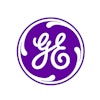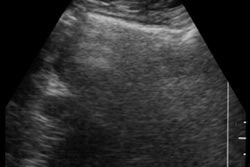An estimated half-million cases a year of pulmonary embolism (PE) in the U.S. can be traced to deep venous thrombosis (DVT), the nation's third most common vascular disease. While sonography and contrast venography can detect DVT through localized anatomical changes, neither can readily distinguish older, "organized" thrombi from acute DVT, which is considered more likely to lead to PE.
In the U.S., an estimated 50,000-200,000 deaths occur annually from PE, which can occur quickly and with little warning in the presence of acute DVT. The most common treatment for DVT, anticoagulation therapy, presents a risk of bleeding and other complications. These and others factors have made the distinction of acute from stable DVT an important clinical goal.
An alternative diagnostic approach, thromboscintigraphy with the 99mTc-apcitide peptide-based radiopharmaceutical, may fill the bill. The radionuclide detects a molecular marker present only in acute DVT, and thus may offer a more relevant diagnosis. A study and invited commentary in the July issue of the Journal of Nuclear Medicine found the method to be safe, effective, and highly sensitive for imaging DVT, with fewer adverse effects than contrast venography.
Contrast venography has been the gold standard for detecting DVT, while sonography is more commonly used in the U.S., wrote study authors Dr. Raymond Taillefer, Stephen Edell, et al from the Hotel-Dieu, Montreal, Québec, Canada, and Royal Columbian Hospital in British Columbia, Canada (JNM Vol. 41, No. 7 pp. 1214-1226). Both methods have serious shortcomings, however.
Contrast venography may be technically inadequate or difficult to interpret in 10%-30% of patients, and can't distinguish stable from acute DVT.
Duplex sonography, used increasingly in combination with Doppler color-flow imaging, is less accurate in patients without localizing signs and symptoms, and the presence of duplicate veins can lead to false-negative results, the authors wrote. The test is also time-consuming, and the results highly dependent on operator skill.
Two prospective, multicenter trials with identical protocols looked at how often the findings of 99mTc-apcitide (Diatide, Londonderry, NH) scintigraphy matched the findings of contrast venography in the lower extremities. The 243 patients, aged 22-83 years, were tested within 10 days of the onset of symptoms, the authors wrote. Nearly 62% of the patients were receiving heparin at the time of imaging.
Assuming contrast venography findings as 100% accurate, masked reading of 99mTc-apcitide scintigraphy matched the masked reading of contrast venography with a sensitivity, specificity, and agreement of 75.5%, 72.8%, and 74.0%, respectively.
But the authors pointed out that 99mTc-apcitide's accuracy was much higher than those numbers might suggest because contrast venography was clearly a flawed benchmark. In addition to its generally established limitations, contrast venography in the two trials often resulted in different diagnoses from the same scan, depending on the reader.
The case for 99mTc-apcitide was also bolstered by findings in the subset of patients with no history of DVT or PE. These patients, the authors noted, were unlikely to have nonacute thrombi confounding the contrast venography results, making the gold standard a better benchmark. Among these patients, 99mTc-apcitide scintigraphy compared with venography yielded sensitivity, specificity, and agreement of 90.6%, 83.9% and 87.3% respectively, the authors stated.
In addition, there were significantly fewer (p<0.0001) adverse events after administration of 99mTc-apcitide than with the contrast medium.
"The benefits of [99mTc-apcitide] as the radiolabel are obvious," wrote Dr. Christopher Palestro of the Long Island Jewish Medical Center in a commentary accompanying the article. "The peptide is a direct thrombus imaging agent and thus allows a lesion to actually be 'seen,' in contrast to anatomic procedures (including radionuclide blood-flow and blood-pool studies), in which the presence of a thrombus can only be inferred by the presence of anatomic alterations."
Palestro also noted that 99mTc-apcitide can be rapidly prepared, and the diagnosis quickly obtained. Historically, the lack of availability, cumbersome nature, and lengthy time requirements for radionuclide diagnostic methods have dissuaded clinicians from taking advantage of what nuclear medicine has to offer.
"The data presented by Taillefer et al ... offer hope that perhaps this attitude will change," Palestro wrote.
By Eric BarnesAuntMinnie.com staff writer
August 25, 2000
Let AuntMinnie.com know what you think about this story.
Copyright © 2000 AuntMinnie.com



















